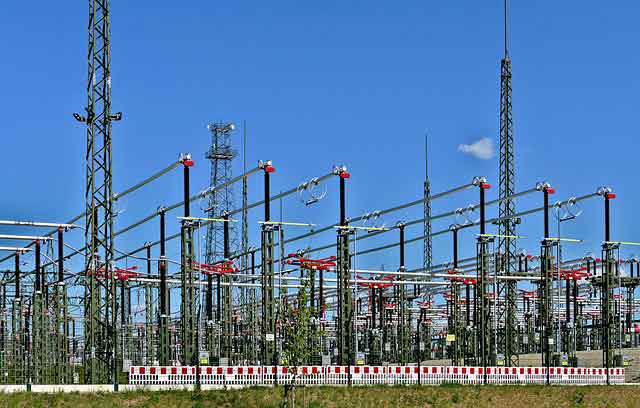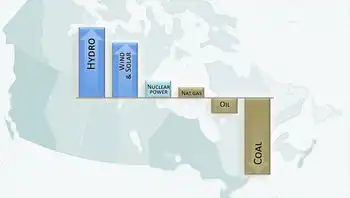Finding and fixing power hogs
That may soon be simpler, thanks to the introduction of a bevy of inexpensive devices that let homeowners monitor how much energy appliances, TVs, PCs, and heating and cooling systems actually use.
Even energy-conscious people can go only so far in managing their home energy use. Sure, we can fiddle with our thermostats, shun incandescent light bulbs and bring in Energy Star appliances. Watching that new LCD TV, however, might wipe out all those gains.
But we just donÂ’t know.
“We have all the technology we want in our cellphones and plasma TVs and cars, but in electricity we’re still like our grandparents were,” says Ahmad Faruqui, an economist at the Brattle Group, a consultancy based in Cambridge, Mass.
Possibly coming to the rescue are home automation networks, which can help monitor all of our power-sucking devices (the typical American household has 27 that are always on, according to the Electric Power Research Institute, an energy research and consulting firm).
Some analysts expect so-called “smart metering” to boom nationwide. ABI Research, a technology firm, estimates that the market will jump to 52 million by 2013, from 560,000 this year — which would be more than a third of the nation’s meters.
Good home automation networks, which run all of the electronic and technologic gizmos in a home, have traditionally cost more than $30,000. Now, thanks in part to companies like Control4 and Colorado vNet, these systems can be had for as little as $5,000, says Sam Lucero, an ABI analyst.
Prices are expected to drop further. Will West, chief executive of Control4 in Salt Lake City, says that in October his firm will start selling a controller for $495, down from $695.
With such a network, “you can turn on your TV and see what your energy use has been like in the last few months, or compare your behavior to other people in your area,” Mr. West says. Consumers can also receive automated tips on how to save money on energy, based on their prior energy use and historical weather patterns. Then, by clicking a button on a screen — either the TV or a computer — they can act on those tips.
Power companies themselves also don’t know how much energy individual household devices use. But that information void is also poised to close, as inexpensive, standards-based technologies create a “smart” power grid that the companies — and consumers — can use to monitor home usage.
Among the technologies adding brainpower to the grid are nascent wireless protocols like ZigBee; Z-Wave from Zensys; and EchelonÂ’s LonWorks, which tracks power use not only wirelessly but also over power lines.
ZigBee is on the verge of becoming the Wi-Fi of home power management, thanks to its inclusion in smart electric meters. But multiple wireless control technologies may coexist, as Wi-Fi and Bluetooth do. For both consumers and utilities, it’s like “going from an odometer to a speedometer,” says Paul De Martini, vice president of Edison SmartConnect, Southern California Edison’s next-generation metering project. It intends to introduce smart meters to its 5.3 million customers by 2012. This project is expected to help reduce peak power demand by 5 percent — about the output of an 1,100-megawatt power plant — and overall demand by 1 percent. That would cut carbon dioxide emissions as much as taking 79,000 cars off the road, Mr. De Martini says.
In 2005, when Southern California Edison developed a plan for smart meters, it would have lost a billion dollars on the project. Today, under a proposal on which the California Public Utilities Commission is expected to rule in August, Edison thinks it will at least break even on smart meters.
In power emergencies, such meters could allow the utility to automatically reduce energy demand to help avoid power failures.
Smart meters also would allow for tiered pricing, in which customers would pay more for power during high-use times and less during off-peak hours. Large companies have had such pricing for years.
Despite such momentum, utilities canÂ’t just change direction the way many Internet companies do, cautions Bill Ablondi, director of home systems at Parks Associates, a market consultant based in Dallas. Mr. Ablondi doubts regulators and utilities will rapidly adopt smart grid technologies.
“The technology is here, but I think we’re looking at more like a 10-year horizon,” he says.
For a planet plagued by rising energy prices and rising temperatures, better energy management has gigantic potential. The McKinsey Global Institute, the economics research arm of McKinsey & Company, projects that aggressive investment in energy management could keep demand nearly flat between now and 2020.
But to depress growth in energy use on that scale would require more than just smart grids and smart homes. Governments would have to take steps like developing rate structures that reward efficiency, not power production, and eliminating write-offs for energy use. It will take a huge investment, too — McKinsey estimates $170 billion a year globally through 2020 (though it promises a 17 percent return on investment).
What smarter grids can do is help grease the rails of innovation for regulators and investors by showing just how much energy we waste, says Diana Farrell, director of the McKinsey Global Institute. The degree of waste, Ms. Farrell says, is so big that it makes investing in energy management look far more viable for fighting global warming than any alternative energy source. “The demand side is the answer, right now, with commercially available technologies that are scalable,” she says.
Related News

Physicists Just Achieved Conduction of Electricity at Close to The Speed of Light
LONDON - When it comes to data transfer and computing, the faster we can shift electrons and conduct electricity the better – and scientists have just been able to transport electrons at sub-femtosecond speeds (less than one quadrillionth of a second) in an experimental setup.
The trick is manipulating the electrons with light waves that are specially crafted and produced by an ultrafast laser. It might be a long while before this sort of setup makes it into your laptop, but the fact they pulled it off promises a significant step forward in terms of what we can expect from our…





